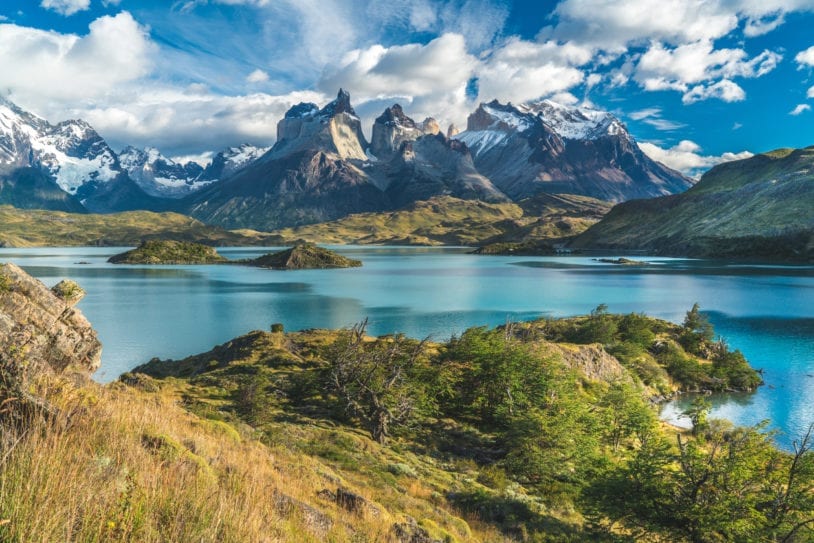Patagonia is a fascinating world unto itself with magical landscapes intertwining majestic Andes mountains, deserts, pampas grasslands and turquoise blue waterways, embracing southern Chile and Argentina in South America. We visit Patagonia on our hiking and trekking trip there in the Fall and every time we go there, we discover new natural treasures and a wealth of outdoor experiences which may leave us changed forever.
Here are four fun facts about Patagonia you should know:
#1 | Patagonia is HUGE
Patagonia is an incredible, vast wilderness of around 160,000 square miles spanning almost half of both southern Chile and Argentina. It’s so big and has so few people living there (less than 5 percent!) that it feels untouched despite its popularity. Patagonian region extends far beyond Torres del Paine National Park and Los Glaciares National Park—two of the most popular places to visit—and boasts countless lakes, 500 miles of fjords, the Andes, glaciers, and tundra grasslands and meadows.

Blue lake on a snowy mountains background and cloudy sky Torres del Paine National Park in Patagonia

Guanaco in a Chilean mountain pass in Patagonia

The Perito Moreno Glacier is a glacier located in the Los Glaciares National Park in Santa Cruz Province, Argentina. Its one of the most important tourist attractions in Argentinian Patagonia.
#2 | Patagonia is the “Land of Big Feet”
Ferdinand Magellan, the Portuguese explorer, reached Patagonia in 1520 and encountered the nomadic Tehuelche people, whom he considered to be giants. So he named the region “patagones,” or “land of big feet.” Although a misnomer of the people who lived here (they were only a few inches taller than Europeans at that time, not a few feet), this particular term is apt because two of the largest dinosaurs ever discovered once roamed Patagonia.
Another fun fact: the mylodon, a giant ground sloth native to Patagonia, was the last sloth to go extinct. Several caves near Puerto Natales (and a giant statue of a mylodon in the middle of town!) celebrate the 1895 discovery of the mylodon as well as human habitation dating back to 6000 BC.
#3 | Patagonia’s Roots: the Legendary Gauchos
Gauchos, or highly skilled horsemen, once freely roamed the Patagonian grasslands, grazing cattle and sheep. Being a gaucho is still a revered profession and way of life for many in this sparsely populated region. Go for a horseback ride in Patagonia and you’ll learn more about these legendary cowboys.
Bonus: read the epic poem El Gaucho Martin Fierro for a classic original insight into not only the gauchos’ way of life but also their contribution to the development of Argentina.

#4 | Patagonia’s Penguins: Friendly but Endangered
Patagonia is home to the largest colony of Magellanic penguins – around 1.7 million pairs, to be exact. For a unique take on these cute and remarkable birds, we suggest reading the memoir, The Penguin Lessons. It’s a true story about a teacher who rescues a penguin from an oil spill – an unfortunate and frequent reality that keeps these birds on the endangered list.
AdventureWomen travels to the epic Patagonian region of Chile in the Fall of 2019. Join our other adventurous women and discover for yourself why Patagonia is such a unique and still unspoiled region of the world showcasing the best natural treasures of South America.



